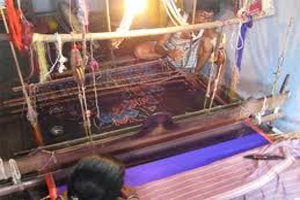
Handloom weavers to be included under NREGA
YarnsandFibers News Bureau 2014-01-16 10:00:00 – New DelhiHandloom weaving, the centuries-old art is dying a slow death because weavers are unable to make ends meet. The number of India's handloom weavers is on the decline as low remuneration and rising costs are making traditional worker look to other trades. The government has finally woken up to their problems.
Textiles Ministry is working on a proposal to include handloom weavers under the National Rural Employment Guarantee Act (NREGA) so that they can be entitled to higher wages.
Textiles Secretary Zohra Chatterjee said at the Silk Mark Expo, which was inaugurated by Textile Minister K S Rao here said that the Ministry has taken this (inclusion of handloom weavers under NREGA) up very seriously with the Ministry of Rural Development. They have had a very positive dialogue with them,
They (Rural Development Ministry) have agreed to one of the requests which is to include silk farming under NREGA and hoping that they will also examine this request and find a way.
Chatterjee also interacted with famous designers including Neeta Lulla and Satya Paul and sought their suggestions for creating a high-end market for the country's silk products and addressing the issue of declining handloom weavers.
India is the second largest producer of silk with annual production of 23,579 MT in the year 2012-13. Indian silk is exported to 190 countries including US, UK, Italy, Germany and Spain.
Handloom textiles not only constitute a timeless facet of the rich cultural heritage of India but also as an economic activity.
Market Intelligence
Ask for free sample Report

experience
Customer Base
dedicated team
Countries Served Worldwide









